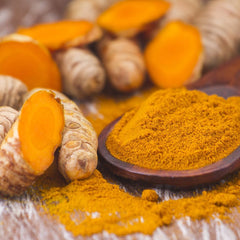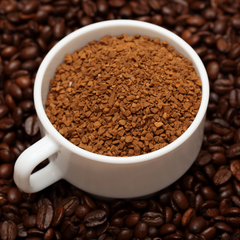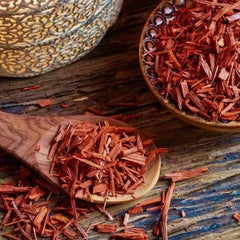What is the Oldest Musky Perfume?
Click For Affordable Inspired Perfume Alternatives
Perfume has been an integral part of human culture for thousands of years, serving as a symbol of luxury, status, and personal expression. Among the myriad fragrances that have captivated audiences over centuries, musky scents hold a special place due to their deep, warm, and sensual qualities. But what is the oldest musky perfume in history? Exploring this question takes us on a fascinating journey through ancient civilizations, evolving fragrance formulations, and timeless scent traditions. In this article, we delve into the origins of musky perfumes, uncover the earliest known formulations, and examine how these ancient scents continue to influence modern perfumery.
What is the Oldest Musky Perfume?
The title of the oldest musky perfume can be attributed to ancient formulations from civilizations that valued scent as both a religious and social symbol. While specific recipes from thousands of years ago are lost to history, archaeological evidence and historical texts point to some of the earliest known musky fragrances, with notable examples originating from ancient Egypt and the Indus Valley. Among these, the Egyptian "Kyphi" incense and certain early arky fragrances are considered some of the earliest perfumes to incorporate musky elements. However, the most renowned and widely recognized ancient musky perfume is the "Musk" used by the Chinese and Middle Eastern civilizations, which has a history dating back over 3,000 years.
Ancient Civilizations and Their Musk Perfumes
Understanding the origins of musky perfumes requires a look into the civilizations that pioneered their use. These cultures not only valued scent for its aesthetic qualities but also believed in its spiritual and medicinal properties.
Ancient Egypt
Ancient Egyptians are credited with some of the earliest known perfume formulations, dating back to around 1500 BCE. They employed a variety of ingredients such as myrrh, frankincense, and various resins, combined with plant oils. Musky scents were often included to symbolize fertility, protection, and divine connection. The Egyptians used complex mixtures like Kyphi, a type of incense that contained musk among other aromatic substances, which was burned during religious ceremonies and for personal use.
Indus Valley and Ancient India
The Indus Valley civilization (around 3300–1300 BCE) and later ancient India also developed sophisticated perfume-making techniques. The use of natural musks, especially from deer and other animals, was common. Indian perfumers created attars—concentrated oil-based perfumes—featuring musk as a key ingredient. These attars became highly prized and traded across Asia and the Middle East.
Ancient China
Chinese perfumery dates back over 2,000 years, with musk playing a significant role. The Chinese used musk obtained from musk deer, which was highly valued for its fragrance and supposed medicinal properties. Musk was often combined with herbal ingredients to create complex scents used in both cosmetics and traditional medicine.
Middle Eastern Traditions
The Middle East has a long history of using musk in perfumery, dating back at least 1,000 years. Early Middle Eastern perfumers developed techniques to extract musk from animals, which was then blended with other aromatic substances like amber, oud, and spices. These perfumes were often stored in ornate containers and worn by royalty and nobility.
The Development of Musk in Perfumery
The concept of musk as a perfume ingredient evolved significantly over the centuries. Originally derived from the musk deer, the extraction process was labor-intensive and expensive, leading to the development of synthetic alternatives in modern times. However, the use of natural musk in ancient perfumes remains a testament to its enduring appeal.
Natural Musk
- Obtained from musk deer (species like the Siberian musk deer)
- Highly prized for its rich, warm, and animalic scent
- Used sparingly in ancient perfumes due to rarity and cost
Synthetic Musk
- Developed in the late 19th and early 20th centuries
- Offers a similar scent profile to natural musk, but more affordable and sustainable
- Widely used in modern perfumery, making musky scents accessible to a broader audience
Modern Perfumery and Musk
Today, musk is one of the most versatile and popular fragrance notes. It is a staple in countless perfumes, from fresh and clean to deep and sensual. The historical importance of musk as a symbol of luxury and allure persists, with many high-end brands paying homage to its ancient roots.
Famous Ancient Musk Perfumes and Their Legacies
While exact formulations from thousands of years ago are not available, historical records and archaeological findings have highlighted some influential perfumes that featured musk and helped shape the history of perfumery.
Perfumery in Ancient Egypt
Egyptian perfumers created complex scented ointments and incense that incorporated musk, frankincense, and myrrh. These were used in religious rituals, embalming, and personal adornment. The use of musk in Egyptian perfumes demonstrates its importance in spiritual and cultural practices.
Persian and Middle Eastern Perfumes
Persian and Middle Eastern perfumers refined musk-based scents that emphasized depth and richness. These perfumes often included exotic ingredients like ambergris, oud, and spices, creating luxurious blends that are considered precursors to modern attars and perfumes.
Chinese Musk Perfumes
Chinese perfumers developed elegant musk-based formulas, often blending musk with floral and herbal ingredients. These perfumes were used by royalty and aristocracy, emphasizing refinement and status. Their influence can still be seen in traditional Chinese perfumery today.
Conclusion: The Legacy of the Oldest Musky Perfume
The quest to identify the oldest musky perfume reveals a rich tapestry of cultural practices and innovative craftsmanship dating back thousands of years. While specific recipes are lost to history, archaeological and historical evidence points to ancient Egyptian, Indian, Chinese, and Middle Eastern civilizations as pioneers of musky fragrances. The use of natural musk from deer and other animals was central to these early formulations, embodying qualities of sensuality, spirituality, and luxury. Today, synthetic musks and modern perfumery continue to honor this ancient tradition, ensuring that the allure of musk remains timeless. Whether in historical rituals or contemporary luxury scents, musky perfumes are a testament to humanity’s enduring fascination with the power of scent to evoke emotion and timeless elegance.
Buy Perfumes - Best Online Retailers
Click For Affordable Inspired Perfume Alternatives
Click For The Best Niche Perfumes & Decants
Pheromone Perfumes - Confidence, Attraction & Appeal - Click For More
Home Fragrances & Candle Warmers - Click To Scent Up Your Spaces Today!



